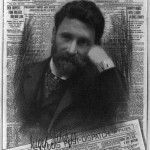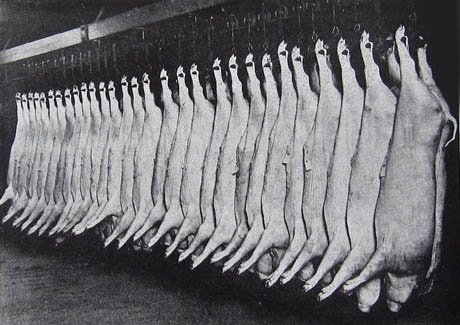Red Scare!
 The Red Scare as described by Foner was a changing point in America in 1919-1920. During this time there was a period of political intolerance inspired by the postwar strike wave and social tensions and fears brought up by the Russian Revolution. General A.Palmer dispatched federal agents to raid the offices of radical and labor organizations throughout the country. During these raids, over 5,000 people were arrested and the government deported hundreds of immigrant radicals. Hoover also developed files on thousands of Americans suspected of holding radical political ideas. In early 1920 the Red Scare collapsed and imprisoned immigrants were released.
The Red Scare as described by Foner was a changing point in America in 1919-1920. During this time there was a period of political intolerance inspired by the postwar strike wave and social tensions and fears brought up by the Russian Revolution. General A.Palmer dispatched federal agents to raid the offices of radical and labor organizations throughout the country. During these raids, over 5,000 people were arrested and the government deported hundreds of immigrant radicals. Hoover also developed files on thousands of Americans suspected of holding radical political ideas. In early 1920 the Red Scare collapsed and imprisoned immigrants were released.
The reading and the political cartoon shown above bear striking resemblance. Foner did not leave out any details that are not portrayed in the image. The cartoon illustrates Uncle Sam spanking labor unions and strikes. This appears as though these organizations were disobedient children and had to be reprimanded which was what Foner describes in the chapter reading.






 In 1917, President Wilson’s administration came up with the CPI, or Committee on Public Information. What this committee did was it tried to manipulate the opinions of the public. They wanted to convince Americans to agree with America’s stance to go into World War 1. They did this by using “posters, newspaper advertisements, and motion pictures” to help spread the governments ideas. They also had Four-Minute Men who would go around trying to help sway the public’s opinions. These men targeted every audience, including most immigrant groups. In the end this committee proved very successful.
In 1917, President Wilson’s administration came up with the CPI, or Committee on Public Information. What this committee did was it tried to manipulate the opinions of the public. They wanted to convince Americans to agree with America’s stance to go into World War 1. They did this by using “posters, newspaper advertisements, and motion pictures” to help spread the governments ideas. They also had Four-Minute Men who would go around trying to help sway the public’s opinions. These men targeted every audience, including most immigrant groups. In the end this committee proved very successful.







 The Federal Trade Commission was established by the U.S. Congress. Five members are joined together for a seven year term to police businesses. The main goal of this board is to promote and protect the rights of consumers. This includes identity theft, false advertising, monopolies, any kind of unfair business competition and price-fixing. Finally citizens were protected from market abuse and enjoyed ‘industrial freedom.’
The Federal Trade Commission was established by the U.S. Congress. Five members are joined together for a seven year term to police businesses. The main goal of this board is to promote and protect the rights of consumers. This includes identity theft, false advertising, monopolies, any kind of unfair business competition and price-fixing. Finally citizens were protected from market abuse and enjoyed ‘industrial freedom.’








